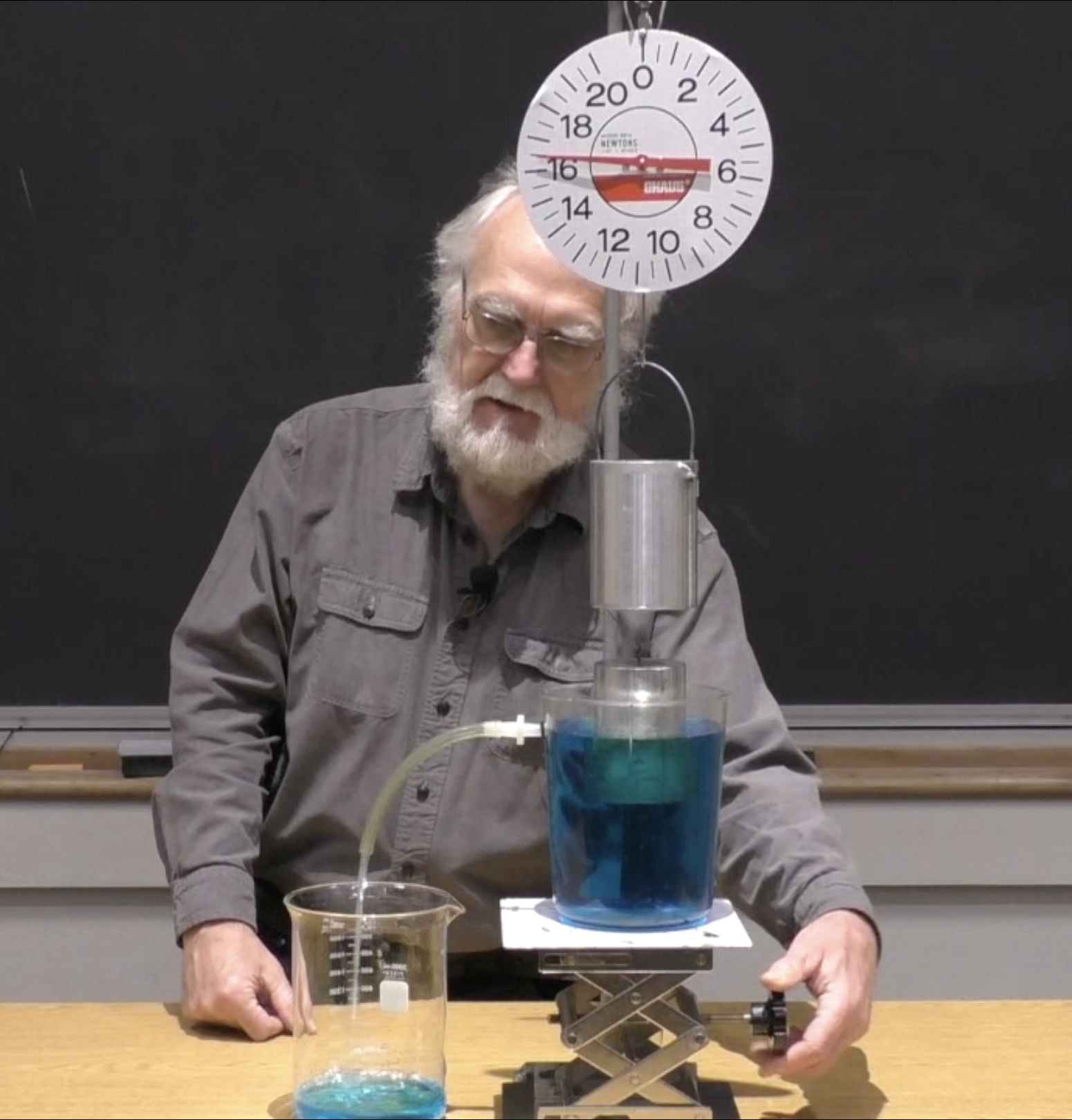Difference between revisions of "Archimedes' Principle"
From UO Physics Demonstration Catalog
(Description Rewrite. Archimedes Principle.gif was deleted. Need to replace with a picture of the actual set-up) |
|||
| (3 intermediate revisions by the same user not shown) | |||
| Line 1: | Line 1: | ||
{{NewDemo|subject=Fluid Mechanics|topic=Fluid Statics|file1=}} | {{NewDemo|subject=Fluid Mechanics|topic=Fluid Statics|file1=Archimedes Principle Set-up.png}} | ||
This Demo demonstrates Archimedes' Principle which states that any body submerged in fluid is acted on by an upward force | This Demo demonstrates Archimedes' Principle which states that any body submerged in fluid is acted on by an upward force, the buoyant force. The first step is to show and record the spring scale's measurement simply holding the mass of the bucket and mass system. The beaker below sitting on top of a lab jack has water in it right at the hole in the side of the beaker. Raise the lower beaker using the lab jack so the mass is slowly lowered into the beaker of water. The water displaced is collected. Note how the weight measured by the Spring Scale decreases as the mass is submerged due to the buoyant force. Once the mass is fully submerged, pour the captured displaced water into the bucket above the mass and see that the spring scale returns to the original weight. The weight of the displaced fluid is equal to the buoyant force. | ||
'''Location: | '''Location: | ||
* | * Archimedes Apparatus Set-up located in Glass Cabinet T-1 | ||
* Spring Scales are in Drawer 10 | *Spring Scales are in Drawer 10 | ||
* | *Lab Jack | ||
*Stable Rod Stand[[File:Archimedes Principle Is It Pure Gold.mp4|thumb]][[File:Archimedes Principle Example.mp4|thumb]]Beakers are on Shelf T | |||
*Top Video, Sample calculation. | *Top Video, Sample calculation. | ||
*Bottom Video Shows the Demo Set-up and one way to perform it. | *Bottom Video Shows the Demo Set-up and one way to perform it. | ||
Latest revision as of 12:43, 29 December 2022
Return to Fluid Statics
Description:
This Demo demonstrates Archimedes' Principle which states that any body submerged in fluid is acted on by an upward force, the buoyant force. The first step is to show and record the spring scale's measurement simply holding the mass of the bucket and mass system. The beaker below sitting on top of a lab jack has water in it right at the hole in the side of the beaker. Raise the lower beaker using the lab jack so the mass is slowly lowered into the beaker of water. The water displaced is collected. Note how the weight measured by the Spring Scale decreases as the mass is submerged due to the buoyant force. Once the mass is fully submerged, pour the captured displaced water into the bucket above the mass and see that the spring scale returns to the original weight. The weight of the displaced fluid is equal to the buoyant force.
Location:
- Archimedes Apparatus Set-up located in Glass Cabinet T-1
- Spring Scales are in Drawer 10
- Lab Jack
- Stable Rod StandBeakers are on Shelf T
- Top Video, Sample calculation.
- Bottom Video Shows the Demo Set-up and one way to perform it.
